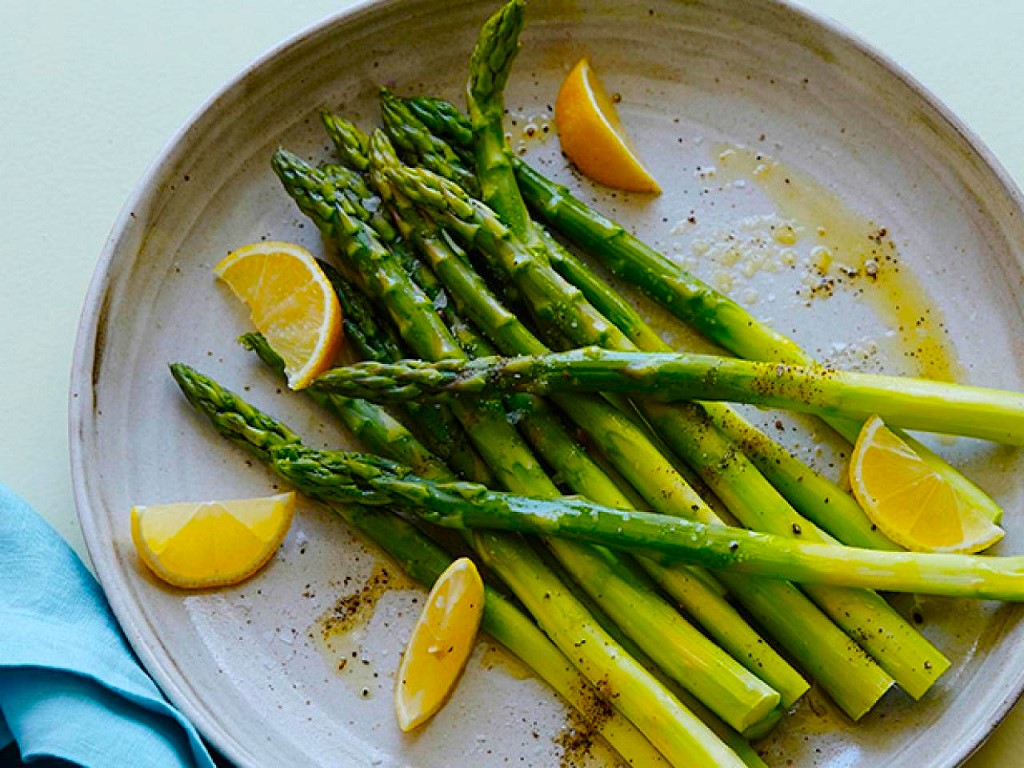
22 Apr Unlocking Perfectly Cooked Asparagus: A Guide to Boiling Times and Beyond
Asparagus, the vibrantly green harbinger of spring, is a versatile and delicious vegetable. One of the quickest and easiest ways to prepare it is by boiling. However, achieving that perfect tender-crisp texture and preventing overcooked, mushy spears can be tricky. In this guide, we’ll dive into the ideal asparagus boiling times, essential tips for before and after boiling, and delicious serving ideas.
Before You Boil: Preparation is Key
- Choosing the Right Asparagus: Look for firm, bright green stalks with tightly closed tips. The thickness of the asparagus will determine the boiling time.
- Trimming: Cut off the tough, woody ends of the asparagus. You can usually snap them off with your fingers where the tender part of the stalk begins.
- Peeling (Optional): For very thick asparagus, peeling the bottom portion of the stalks can help ensure even cooking.
The Perfect Boiling Time
The ideal boiling time for asparagus depends on its thickness:
- Thin Asparagus:2-3 minutes
- Medium Asparagus:3-5 minutes
- Thick Asparagus:5-7 minutes
Pro Tip: Always err on the side of slightly undercooked asparagus. You can always cook it a bit longer if needed, but overcooked asparagus is difficult to salvage.
How to Freeze Breaded Okra? The Ultimate Guide for Food Preservation
Master the Technique
- Prep the Pot: Use a large skillet or pot filled with enough salted water to cover the asparagus. Bring to a rolling boil.
- Add the Asparagus: Gently place the asparagus spears into the boiling water.
- Timing is Everything: Start timing immediately. Test doneness by piercing a spear with a fork – it should be tender but still have a slight bite.
- Ice Bath: Immediately drain the asparagus and plunge it into a bowl of ice water to stop the cooking process and preserve its vibrant color.
- Dry Thoroughly: Pat the asparagus dry with a clean towel to remove excess moisture before serving.
Beyond Boiling: Additional Tips
- Alternative Cooking Methods: While boiling is quick and easy, asparagus can also be roasted, grilled, or sautéed for different textures and flavors.
- Don’t Overcrowd: Cook asparagus in batches if needed to ensure even cooking and prevent overcrowding of the pan.
- Flavor Boost: Add lemon slices, garlic cloves, or a bay leaf to the boiling water for a subtle flavor infusion.
Serving Asparagus with Style
Boiling asparagus is just the first step. Here are some creative serving ideas:
- Classic: Keep it simple with melted butter, a squeeze of lemon juice, and freshly cracked black pepper.
- Parmesan Power: Sprinkle with grated Parmesan cheese for a touch of savory goodness.
- Balsamic Twist: Drizzle with a balsamic glaze for a sweet and tangy flavor.
- Hollandaise Heaven: Serve warm asparagus with a dollop of creamy hollandaise sauce.
- Salad Surprise: Top salads with chilled boiled asparagus for extra crunch and nutrition.
- Wrap It Up: Add boiled asparagus spears to wraps and sandwiches for a vibrant addition.
Important Note: Asparagus is naturally high in vitamin K, which can interact with certain medications like blood thinners. If you are taking such medications, please consult your doctor about how much asparagus is safe to consume.
Conclusion
Boiling asparagus is a simple technique that, when done correctly, yields delicious and perfectly cooked results. By understanding the importance of proper preparation, ideal boiling times based on thickness, and creative serving ideas, you can elevate this humble vegetable to new heights.



Sorry, the comment form is closed at this time.